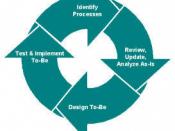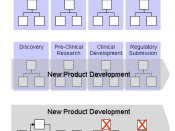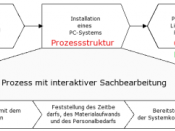BPR of a Technology Project at ImageStream
The system development life cycle (SDLC) is one possible process deployed in the development or acquisition of any application or project (ISACA, 2004). Software and technology-based organizations like ImageStream commonly use the SDLC. This traditional method employs a "top level decomposition of processes" that can handle "large software development projects practically" (Pei, 1995).
Businesses have used the underlying concepts of Business Process Reengineering since the late 1890s with Frederick Taylor's landmark Principles of Scientific Management (Gilliland, et al, 2003). Modern management authors have popularized the concept, and several high profile successes have brought significant publicity to the approach. Although BPR is not a magic potion for ailing industries, it can help to transform companies struggling to conduct business in their traditional or historic methods. Business Process Reengineering shifted the focus of business managers, concentrating them on the process used to derive the final product rather than only the final product deliverable itself.
A company's approach to its processes has a great impact on the potential success of the organization and its ability to build and return value to its shareholders. The BPR process provided companies with many opportunities to improve operational efficiency.
Analysis
Business Process Reengineering analyzes and redesigns "workflows and processes within and between organizations" (Malhotra, 1998). Business Process Reengineering is one method of improving operations and therefore outputs of organizations, both public and private. The BPR process alters the business processes of the organization as a whole (Kovaeie, 2003). This paper outlines the BPR analysis conducted by ImageStream of an Internet infrastructure project for the province of Selangor in Malaysia. The BPR surveyed and identified the distinctive characteristics of BPR for and in public organizations.
Data Collection
The data collection (information gathering) involved visits to the twenty-five sites throughout the western...


